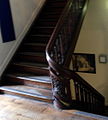Maastricht University is a public research university in Maastricht, Netherlands. Founded in 1976, it is the second youngest of the thirteen Dutch universities.

Buda Castle is the historical castle and palace complex of the Hungarian Kings in Budapest. It was first completed in 1265, although the massive Baroque palace today occupying most of the site was built between 1749 and 1769. The complex in the past was referred to as either the Royal Palace or the Royal Castle. The castle now houses the Hungarian National Gallery and the Budapest Historical Museum.
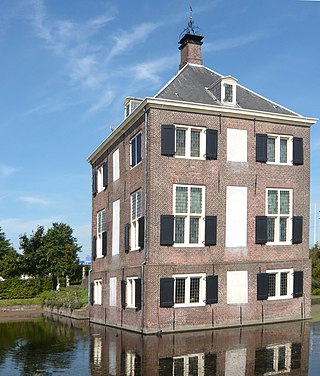
Hofwijck is a mansion built for 17th-century politician Constantijn Huygens. It is located in Voorburg on the Vliet canal from The Hague to Leiden. Formal address of the cultural heritage is 2 Westeinde, Voorburg, the Netherlands, but its location today is better known as the Voorburg railway station.

The Hôtel d'Assézat in Toulouse, France, is a French Renaissance hôtel particulier of the 16th century which houses the Bemberg Foundation, a major art gallery of the city.

The U.S. Customs House, located at Bonaire and Aduana streets in barrio La Playa, Ponce, Puerto Rico, is the oldest customs house in Puerto Rico, and the only one of its type under the U.S. flag. As of 10 February 1988, the building was owned by the U.S. Customs Service, Washington, D.C. The building is listed on the U.S. National Register of Historic Places as "U.S. Custom House". It was listed on 10 February 1988.
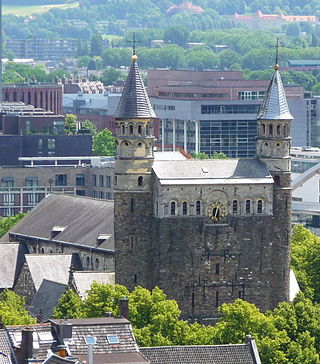
The Basilica of Our Lady is a Romanesque church in the historic center of Maastricht, Netherlands. The church is dedicated to Our Lady of the Assumption and is a Roman Catholic parish church in the Diocese of Roermond. The church is often referred to as the Star of the Sea, after the church's main devotion, Our Lady, Star of the Sea.

The Fotomuseum aan het Vrijthof is a museum of photography in Maastricht, Netherlands.
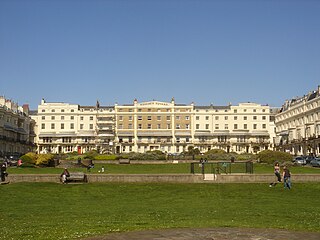
Regency Square is a large early 19th-century residential development on the seafront in Brighton, part of the British city of Brighton and Hove. Conceived by speculative developer Joshua Hanson as Brighton underwent its rapid transformation into a fashionable resort, the three-sided "set piece" of 69 houses and associated structures was built between 1818 and 1832. Most of the houses overlooking the central garden were complete by 1824. The site was previously known, briefly and unofficially, as Belle Vue Field.

The Albert is a Grade II listed pub located at 52 Victoria Street in Victoria, London, about 0.4 miles (0.64 km) southwest of Westminster Abbey. Built in 1862 by the Artillery Brewery, the pub retains its striking façade and Victorian features that were undamaged during The Blitz in World War II. The Albert was named in tribute to Queen Victoria's husband, Albert, Prince Consort.

August Cieszkowski Street belongs to architecturally remarkable streets of Bydgoszcz, with its Art Nouveau features from the Fin de siècle period, forming a homogeneous complex of tenements from the end of 19th-century beginnining of 20th century, most of which are registered on Kuyavian-Pomeranian Voivodeship Heritage List.

Śniadecki Street is one of the most important streets of downtown Bydgoszcz, with an important mercantile concentration.

Piastowski Square is a large and important square in downtown Bydgoszcz, bearing several buildings registered on the Kuyavian-Pomeranian Voivodeship Heritage List.
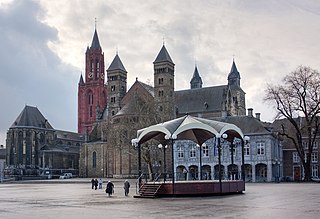
Vrijthof is a large urban square in the centre of Maastricht, Netherlands. The square developed from an ancient Roman and Frankish cemetery into a semi-private space that belonged to the Collegiate Church of Saint Servatius. In the 19th century, it became the town's main square. It is surrounded by important heritage buildings, museums, a theatre, and a range of hotels, restaurants, and bars. The square is regularly used for public events.

The Crosier Monastery or Monastery of the Crutched Friars is a former monastery of the Order of the Holy Cross in Maastricht, Netherlands. The well-preserved convent buildings house a five-star hotel, the Kruisherenhotel. Having survived more or less in its entirety, it is a rare example in the Netherlands of a Gothic monastery. The buildings from the 15th and 16th century constitute three listed buildings (Rijksmonuments). The more or less intact monastery archive is unique in the Netherlands.

Obrońców Bydgoszczy street is located in downtown district, in Bydgoszcz, Poland. Many of the buildings along this axis are either registered on the Kuyavian-Pomeranian Voivodeship heritage list, or part of a historical ensemble of Eclectic and Art Nouveau architecture in the city.
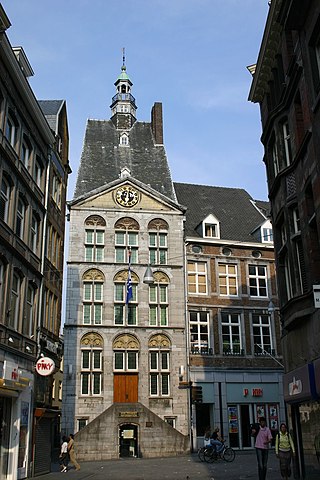
The Dinghuis is a building in downtown Maastricht, Netherlands, constructed at the end of the 15th century.

Villa Mariënhof is a historic mansion with a garden located along the Bredaseweg in the Dutch city Tilburg. It was built between 1916 and 1918 as the residence of the family of a factory owner, and it was designed by Johan Wilhelm Hanrath. In 1986, it was inherited by Staatsbosbeheer, who first used Villa Mariënhof as an office and later rented it. The house itself, its teahouse, and the garden are rijksmonumenten.

Sienkiewicza Street is a long thoroughfare laid in the mid-1860s in downtown Bydgoszcz. Its frontage carries several tenements which have kept their original architectural features and their historical importance.

Chrobrego Street is an avenue located in downtown Bydgoszcz. Its frontage carries tenements which present a character of uniformity in their architectural features, several of them being listed at the Kuyavian-Pomeranian Voivodeship heritage list.

The Sint-Janskerk is a Gothic church in the center of the Dutch city of Maastricht. The Protestant Sint-Jan is situated next to the Roman Catholic Basilica of Saint Servatius on the Vrijthof, a unique sight in the Netherlands.






